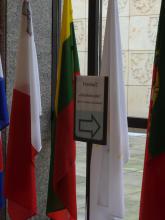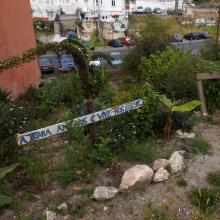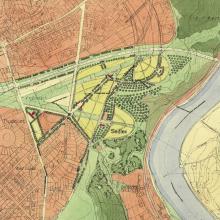Allotments can be found across continental Europe as well as in the UK. In Manchester, allotments exist in parallel to other urban gardening initiatives, which are often results of the activities of local inhabitants. These are not only community gardens, which we may find even as part of allotments, but also plots in the city where anybody who needs them can harvest produced herbs, rhubarb, or zucchinis.
News
24.1.2017
The exhibiton prepared by the Czech Union of Gardeners for the Chamber of Deputies of the Parliament of the Czech Republic was opened on 17 January 2017. Some of the photographs come from our research archive, some were provided by gardeners we know. Unfortunately, you cannot visit the exhibiton unless you have the entry pass / invitation to the Parliament. To get a taste of the exhibition, see the photo gallery.
31.10.2016
Please accept the invitation to attend the roundtable/workshop Nature – home – housing: Negotiating urban space and its development which will take place on Monday, 31 October at the Academic Conference Centre (Husova 4a, Prague) at 10:30. The workshop, consisting of 8 scholarly presentations, offer various perspectives on the changes of the role and shape of urban nature and the environment, the relationship of current urban development policies to urban nature, and the interconnections between nature, housing and home in the city.
30.9.2016
call for papers
round table / monothematic issue of Critical Housing Analysis
27.6.2016
Whether you research them or just go for holidays, you can bump into allotments all around Europe, even in Lisbon. In some ways, the allotments there are similar to the ones in the Czech Republic; in other, they seem completely different. Due to the last (and still reverberating) crisis, the allotments in Lisbon are much more utilitarian – mainly in the vicinity of large housing areas, further away from the city centre, these are the places of intense growing of vegetables.
5.5.2016
We started with archive research. Thanks to helpful archivers in the archive of the Prague Institute of planning and development, we obtained number of sources related to planning of allotments, urban nature, and urban spaces in Prague in the second half of the 20th century. What awaits us before we can continue with our explorations in other archives is the analysis of the acquired materials.


